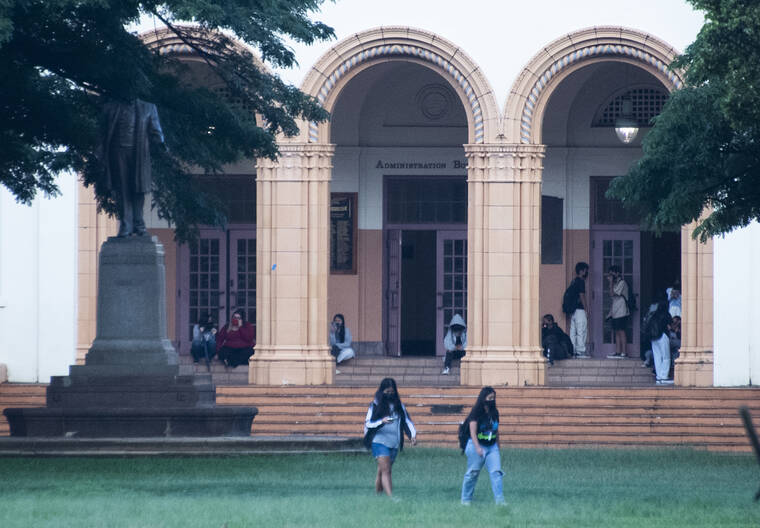Hawaii public school teachers who called in absent spiked to 2,159 Friday amid the current COVID-19 surge, the state Department of Education reported. And the state was short 472 substitute teachers to cover its missing classroom educators.
Teacher absences on the other school days this week ranged from 1,685 to 1,790, with shortfalls of substitute teachers ranging from 359 to 447 — illustrating the struggle that the unprecedented rise of the omicron variant continues to impose on schools, teachers and families in Hawaii and nationwide.
Almost 17% of the department’s 12,800-teacher workforce was out Friday, up from about 14% a week earlier. This was despite the DOE shortening the quarantine and isolation periods for school employees and students in most cases to five days from 10.
State schools interim Superintendent Keith Hayashi last week said about half of the absent teachers had called out sick, while the other half were out for other reasons, such as family leave and vacation.
Of Friday’s 2,159 absences, 525 were positions that did not require a substitute teacher. That left 1,634 positions that needed substitutes, but only 1,162 substitute teachers signed up to work.
The shortage of teachers and substitutes means many students have been sent to cafeterias, auditoriums or other teachers’ classrooms, while other teachers, counselors, security guards and district and state staff have been compelled to help supervise — some say against their will. Sunset Beach Elementary and Waianae Intermediate schools abruptly shifted temporarily to distance learning this week.
Many teachers, students and families have felt caught in the middle between the department’s insistence on keeping schools open for in-person learning as much as possible, and the fear of getting sick.
“Parents are told by officials that schools are safe and that schools implement layers of protection. This is not the case, per many educators from around the state, as well as personal observation,” said Dayna Moore, a single parent of one child, and leader of the Hawaii COVID-19 Community Health Alliance, a grassroots organization.
“Parents are not given enough information about the facts and the risks to make fully informed decisions about placing their keiki in-person in a system that is not designed for infection control during a global pandemic. I’m very concerned for keiki. Our keiki have no voice and no choice.”
In an email, Nanea Kalani, DOE acting communications director, said the Education Department is “deeply grateful to our teachers who are going above and beyond during this challenging time to help where help is needed, our school administrators who are juggling multiple responsibilities, and all of our school-level, complex area and state office staff and leaders who are working tirelessly on behalf of our students.”
Friday’s absences were 19% higher than the the 1,812 reported Jan. 7, the last time the department released absence data. Honolulu Star-Advertiser requests for absence numbers for other school staff as well as for students were not answered.
The Hawaii State Teachers Association this week filed a new demand for impact bargaining, and a grievance, over the way the Education Department is handling staffing and safety amid pandemic challenges. A complaint to the Hawaii Labor Relations Board is pending.
Nationwide, school disruptions rose from 5,531 last week to 6,003 this school week, according to Burbio, a company that monitors COVID-19 policies in more than 80,000 K-12 campuses.
Meanwhile, Hayashi apologized Thursday for the Education Department’s failure to report the number of recent COVID-19 cases in dozens of schools.
The Hawaii State Teachers Association said that as of Tuesday night at least 40 schools had not posted their case counts on the department’s public dashboard since before the winter break, even though they are required by law to do so weekly.
“My sincere apologies for those numbers not being there,” Hayashi said during a joint meeting of the Senate Ways and Means and Education committees. “We are following up with the schools, and we are updating those numbers.” Many schools have since added their latest numbers to the dashboard.

